
2017 AIA COTE Top Ten Green Projects revealed
By Justine Testado|
Wednesday, Apr 19, 2017
Related
With Earth Day coming up, the AIA and the Committee on the Environment (COTE) announced the Top Ten Green Projects for 2017. Over the last 21 years, the annual awards program is considered to be the profession's most rigorous awards program for sustainable design excellence.
The jury chose several U.S.-based projects — designed by Sasaki, ZGF Architects, Payette, HOK, and more — that best convey a thoroughly integrated approach to architecture, natural systems, and technology. Other judging criteria included the project's positive contribution to their communities, improving comfort for building occupants, and the design strategies used to reduce environmental impact.
Check out this year's winners below.

Chatham University Eden Hall Campus; Richland Township, Pennsylvania
Architect: Mithun
Project summary: “After receiving the donation of the 388-acre Eden Hall Farm north of Pittsburgh, Chatham University conceived an audacious goal to create the world’s first net-positive campus. Home of the Falk School of Sustainability, Eden Hall Campus generates more energy than it uses, is a water resource, produces food, recycles nutrients and supports habitat and healthy soils while developing the next generation of environmental stewards. Linked buildings, landscapes and infrastructure support an active and experiential research environment. New building forms, outdoor gathering spaces and integrated artwork complement and interpret natural site systems, while making cutting-edge sustainable strategies transparent and explicit.”
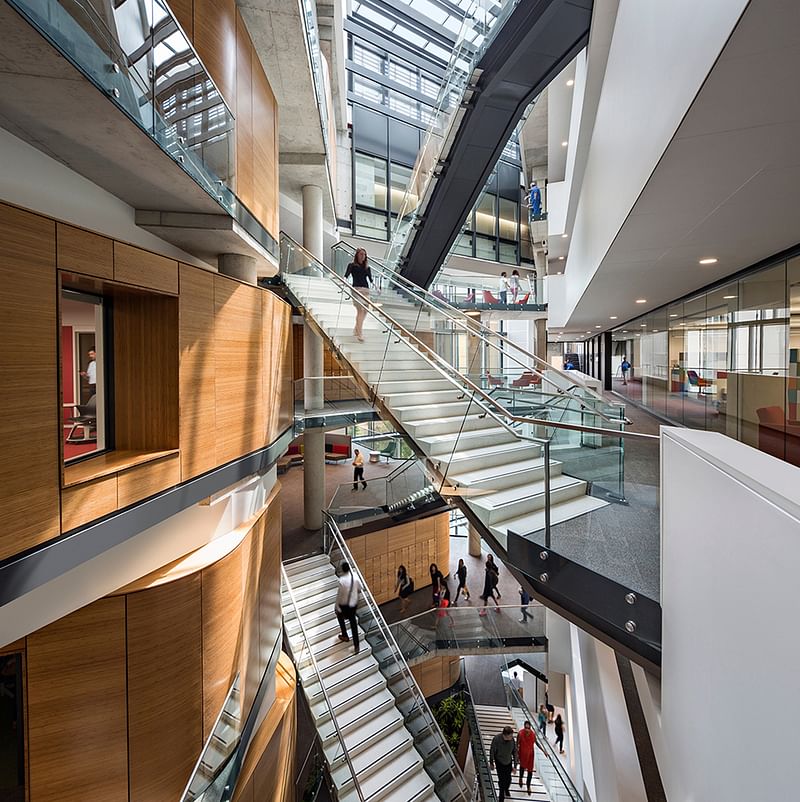
Milken Institute School of Public Health, George Washington University; Washington, D.C.
Architects: Payette and Ayers Saint Gross
Project summary: “The Milken Institute School of Public Health at GWU embeds core public health values — movement, light/air, greenery, connection to place, social interaction, community engagement — in a highly unconventional, LEED Platinum building on an urban campus in the heart of the nation’s capital. Research offices, classrooms and study areas are clustered around an array of multi-floor void spaces that open the building’s dense core to daylight and views. An irresistible, sky-lit stair ascends all eight levels, encouraging physical activity. The pod-like classrooms are set in from the perimeter so informal study and social interaction space can overlook the bustling traffic circle.”
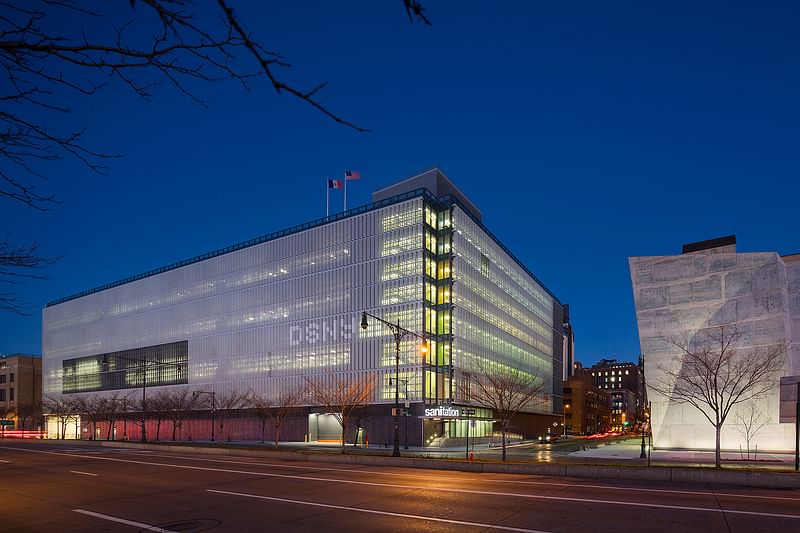
Manhattan Districts 1/2/5 Garage & Spring Street Salt Shed; New York City.
Architect: Dattner Architects and WXY architecture + urban design
Project summary: “The [Garage and Salt Shed] is wrapped in a custom perforated double-skin facade that reduces solar gain while allowing daylight and views in personnel areas. The 1.5 acre green roof protects the roof membrane, reduces heat-island effect, enhances storm water retention and thermal performance, promotes biodiversity of native species, and softens the view from the surrounding buildings. This harvested non‐potable water supply from the roof's storm water and waste steam condensate from municipal steam used to heat and cool the building are used as a source for flushing restroom fixtures and for truck wash. The Garage is a key project for NYC's Active Design Program, promoting health and fitness of occupants through building design.”

Ng Teng Fong General Hospital & Jurong Community Hospital; Singapore
Architects: HOK, USA; CPG, Singapore; Studio 505, Australia
Project summary: “The Green Mark Platinum NTFGH is part of Singapore’s first medical campus to combine continuing care from outpatient to post-acute care. Based on passive principles, the performance-based design supports resource efficiency, health, and well-being. Seventy percent of the facility is naturally ventilated, representing 82 percent of inpatient beds. Unlike its Singaporean peers, NTFGH provides every patient with an adjacent operable window, offering daylight and views. An oasis in a dense city, NTFGH incorporates parks, green roofs and vertical plantings throughout the campus. The building uses 38 percent less energy than a typical Singaporean hospital and 69 percent less than a typical US hospital.”
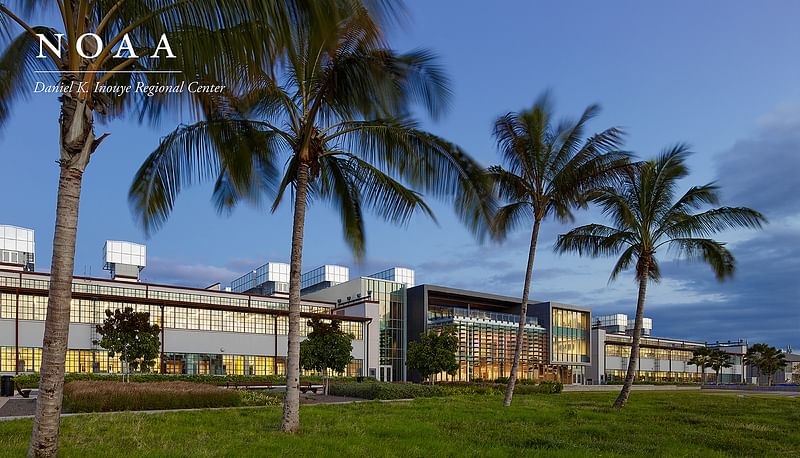
NOAA Daniel K. Inouye Regional Center; Honolulu
Architects: HOK with Ferraro Choi & WSP
Project summary: “Located on a national historic landmark site on Oahu’s Ford Island, the National Oceanic and Atmospheric Administration’s Inouye Regional Center features the adaptive reuse of two World War II-era airplane hangars linked by a new steel and glass building. The hangars inspired beautifully simple design solutions for how the center uses air, water and light. The LEED Gold complex accommodates 800 people in a research and office facility that integrates NOAA’s mission of ‘science, service and stewardship’ with Hawaii’s cultural traditions and ecology. The interior environment, which is based on principles of campus design, creates a central gathering place.”
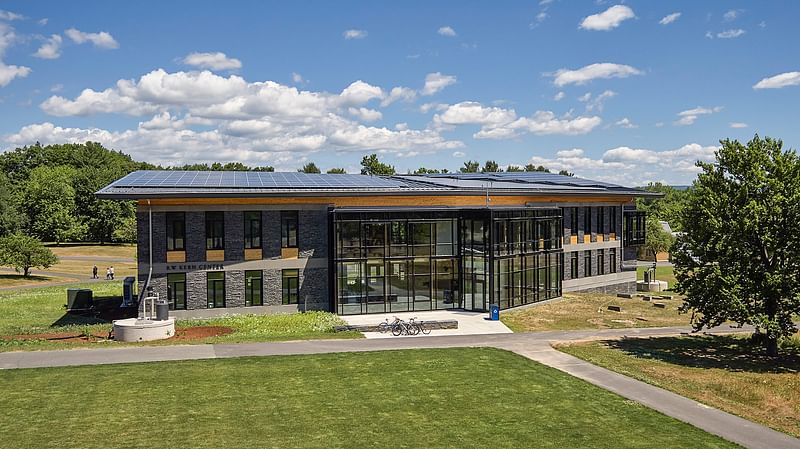
R.W. Kern Center; Amherst, Massachusetts
Architect: Bruner/Cott & Associates
Project summary: “Hampshire College’s R.W. Kern Center is a 17,000 square foot multi-purpose facility designed to meet the Living Building Challenge. As the gateway to campus, Kern includes classrooms, offices, a café, and gallery space. The building is self-sustaining—generating its own energy, capturing its own water, and processing its own waste. The Kern Center is the result of an inclusive and integrated design process and wholehearted commitment to the environmental mission by the whole team. The project demonstrates Hampshire’s dedication to the highest level of sustainability and stewardship, and to the college’s mission of critical inquiry, active leadership and hands-on learning.”

Stanford University Central Energy Facility; Stanford, California
Architect: ZGF Architects LLP
Project summary: “At the heart of Stanford University’s campus-wide energy system is a new, technologically advanced central energy facility. The system replaces a 100 percent fossil-fuel-based cogeneration plant with primarily electrical power—65 percent of which comes from renewable sources—and a first of its kind heat recovery system, significantly reducing greenhouse gas emissions, and fossil fuel and water use. The facility comprises a net positive energy administrative building, a heat recovery chiller plant, a cooling and heating plant, a service yard, and a new campus-wide main electrical substation. Designed to sensitively integrate into the surrounding campus, the architectural expression is one of lightness, transparency and sustainability.”
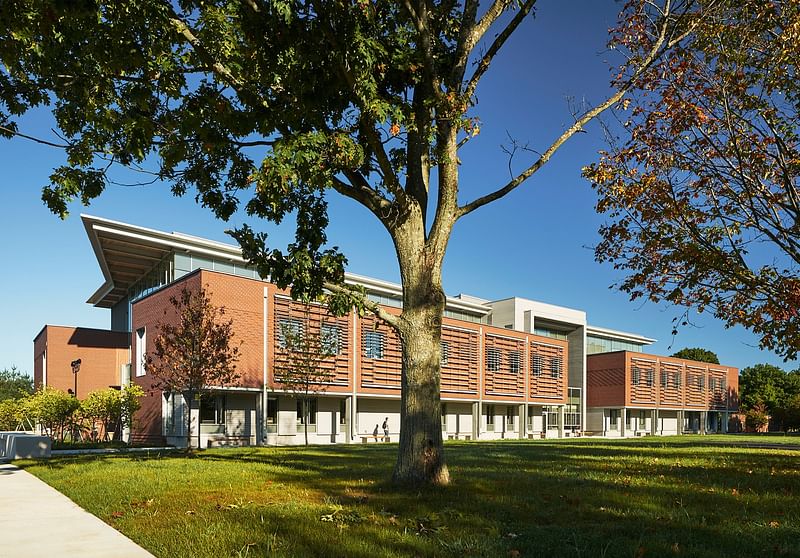
Bristol Community College John J. Sbrega Health and Science Building; Fall River, Massachusetts
Architect: Sasaki
Project summary: “The 50,000-square-foot building sets the standard as the first ZNE academic science building in the Northeast. Providing hands-on learning opportunities and care to underserved populations, its program accommodates instructional labs and support space for field biology, biotech, microbiology, and chemistry; nursing simulation labs; clinical laboratory science and medical assisting labs; dental hygiene labs; and a teaching clinic. Taking a holistic approach to the design and construction of the Sbrega Health and Science Building, the team uncovered innovative ways to eliminate the use of fossil fuels, increase efficiency, and dramatically reduce demand.”

Discovery Elementary School, Arlington Public Schools; Arlington, Virginia
Architect: VMDO Architects
Project summary: “Discovery Elementary School is the largest zero-energy school in the US. The challenge was to integrate a 98,000 square foot building into a residential neighborhood while keeping the entire PV array on the roof. By terracing the mass into a south facing hill, the project met local goals for scale, community goals for preservation of flat, open space for recreation, and global goals for ideal orientation for solar generation. Discovery offers a positive example of a solution to the global crisis of climate change–and along the way emboldens students with the expectation that they are creative participants in those solutions.”
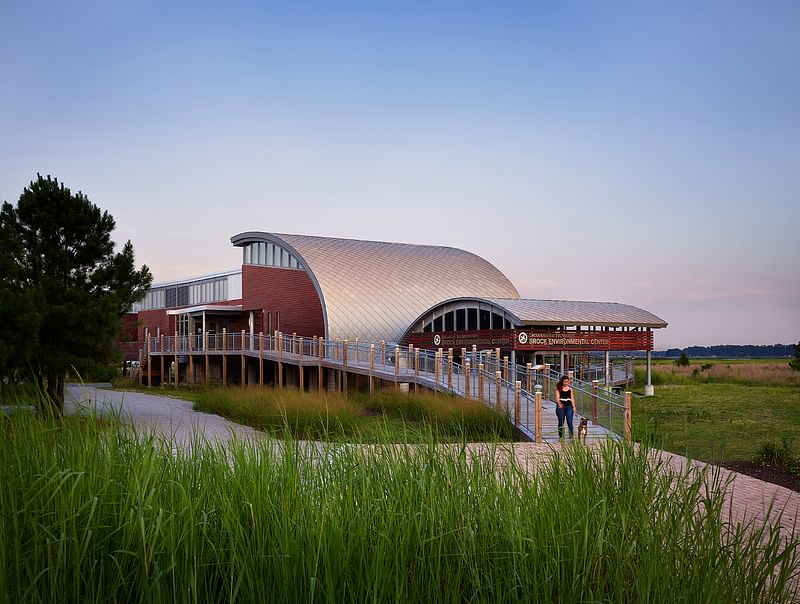
2017 COTE Top Ten Plus honoree: Brock Environmental Center; Virginia Beach, Virginia
Architect: SmithGroupJJR
Project summary: “The Brock Environmental Center is a hub for the Chesapeake Bay Foundation’s Hampton Roads office, supporting their education, advocacy and restoration initiatives. The Center is designed to express CBF’s mission of collaboration to protect one of the nation’s most valuable and threatened natural resources – the Chesapeake Bay. CBF aspired to manifest true sustainability, creating a landmark that transcends notions of “doing less harm” towards a reality where architecture can create a positive, regenerative impact on both the environment and society. The Center surpasses LEED achieving zero-net-CO2 emissions, zero waste, and Living Building Challenge certification from the International Living Future Institute.”
Revisit previous AIA COTE Top Ten Green Projects in the links below.
All images courtesy of the AIA.

RELATED NEWS AIA announces the 2016 COTE Top Ten Green Projects

RELATED NEWS AIA selects the 2015 COTE Top Ten Green Projects

RELATED NEWS AIA announces the 2014 COTE Top Ten Green Projects


Share
0 Comments
Comment as :